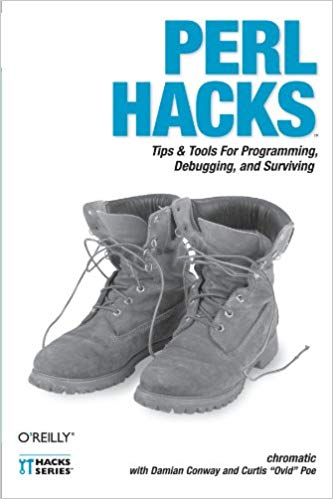A Brief History of Private Spaceflight
At the end of the 20th century, spaceflight was considered a “national” endeavor, limited to a few countries such as the United States, Russia, France, China, Japan, and so on. Companies like Boeing, Honeywell, Roscomos, Arianespace, and others provided space offerings that were attached to national programs, not private programs.
But at the dawn of the 21st century, things started to change. Jeff Bezos founded Blue Origin in 2000. Elon Musk founded SpaceX in 2002. Richard Branson founded Virgin Galactic in 2004. Blue Origin was in stealth mode. Elon Musk was laughed at. Virgin Galactic was viewed as the toy of a billionaire playboy. Bezos, Musk, and Branson, serial entrepreneurs all, saw a future for spaceflight that others had not. They wanted to create new industries.
At that time, VCs weren’t interested in space startups. Investment funds didn’t carry them in their portfolios. By 2014, when Google acquired satellite company Skybox Imaging , that changed. The era of private spaceflight was starting to mature.
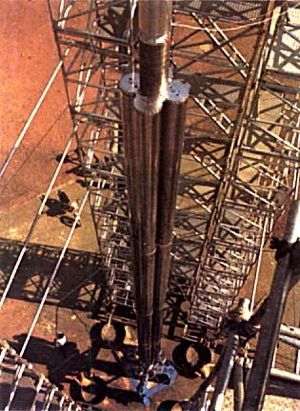
But just as many people aren’t aware that the internet started long before the mid-90s, private spaceflight began long before this century.
Commercial satellite launches began in the 1960s, long before humanity landed on the moon. The first amateur satellite, OSCAR I, was launched in 1961 , a scant four years after Sputnik, and the first commercial satellite, Telstar 1, was launched in 1962 .
And then there was OTRAG. OTRAG was a private rocket company founded in 1975 by Lutz Kayser, a German entrepreneur. The intent was to build low-cost rockets an order of magnitude cheaper than existing rockets. Amazingly, Kayser succeeded, but the history is tragic .
Kayser’s activities made the great powers nervous. The USSR and France were not interested in Germany achieving an indigenous long-range rocket activity. American rocket makers were not interested in having a low-cost competitor. A propaganda campaign began, alleging OTRAG was a cover for German and South African nuclear cruise missile development. Crude Soviet-source disinformation was eagerly picked up and given credibility by the American mainstream media. The government of the Congo, [where OTRAG was launching from], was pressured by the Russians to withdraw permission to use the site. OTRAG left the country in April 1979.
They relocated to Libya, but the Libyan government seized their rockets in an attempt to create their own rocket program. Fortunately, without Kayser’s experience, they failed, and the dream of private spaceflight failed with it.
If Kayser succeeded, we might have our moon base by now. We might be on Mars already. Instead, we’re still waiting, decades later.
There’s a decent Wikipedia page that sums up the history of private spaceflight , but mostly, the nascent industry sputtered along in fits and starts, usually followed by bankruptcy.
It wasn’t until the 21st century that the private rocket industry exploded.
Now, everything is changing, but what’s going to change? To understand that, we have to know a bit about the evolution of markets.
The Four Phases of Market Evolution
Note: much of the following is derived from the work of Simon Wardley , but I’ve adjusted some of the terminology.
Markets (and new products within them) tend to evolve through four maturity phases. Each has unique characteristics and should be treated differently. This is boring for most, but it’s important. These phases are:
- Novelty Phase: A new market emerges. Unknown how/if consumers will respond.
- Stability Phase: The new market is stabilizing, but not necessarily mature. Still experimenting with different approaches.
- Commodity Phase: Robust competition amongst competitors. Less product differentiation due to market maturity.
- Utility Phase: Market is mature, widespread, very stable, and margins are thin. New markets are built on top of these.
Note: the above descriptions are far too brief. For extended descriptions, I have a brief article which explains them in more detail, including examples.
For private spaceflight, the “novelty phase” was when entrepreneurs started to see potential, but it’s very high-risk, high-reward. As first movers, if they succeed (most did not, of course), they can reap tremendous benefits. This is why Elon Musk regularly tops the lists of the world’s richest people.
As we move from novelty to stability to commodity to utility, we see risk gradually decreasing:
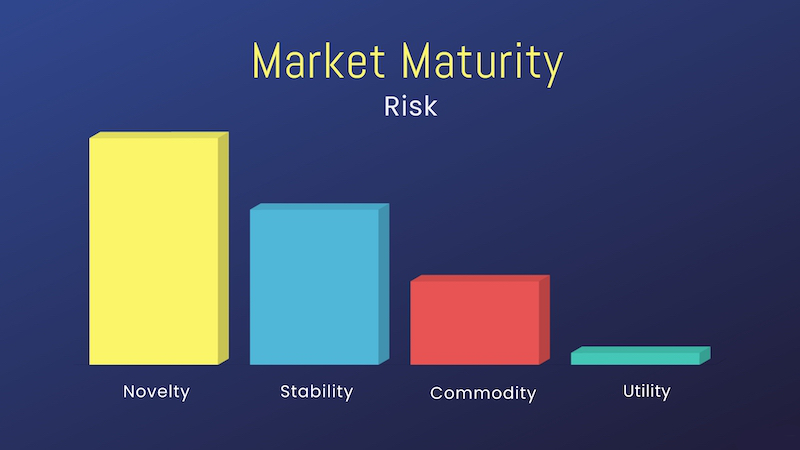
Why does risk decrease? There are various factors, including customers becoming more comfortable with the market and having new ideas how they can utilize the market. But to succeed in this evolution, the products in that market must be reliable. Would you buy a cell phone that only has service 50% of the time? Probably not.
What this means is that as markets mature, their products become more stable:
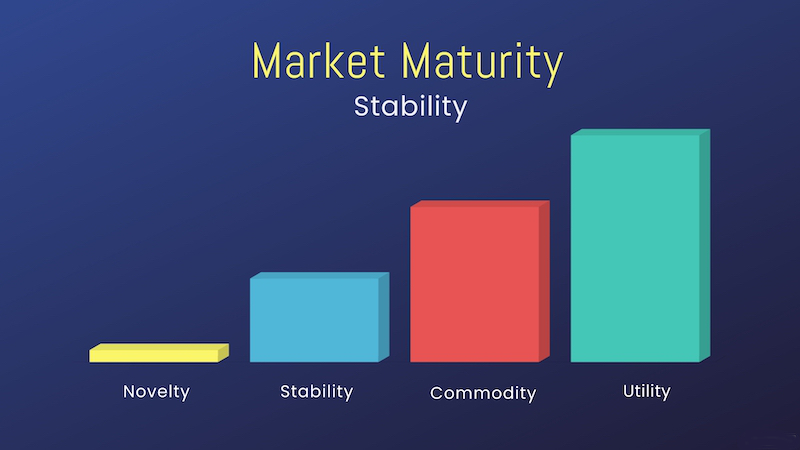
Now compare this with air travel :
In the industry’s embryonic era, accidents were disturbingly numerous. Ironically, 1929, the year of “The Great Crash,” was also one of the most crash-ridden in aviation history, with 24 fatal accidents reported. In both 1928 and 1929, the overall accident rate was about one per every million miles flown. In today’s system, an accident rate of that magnitude would result in a nearly incomprehensible 7,000 fatal accidents each year.
By 2017, there were no recorded deaths of passengers in commercial passenger jets . In 2019, a National Safety Council’s recent odds-of-dying data reports that you have a 1 in 107 chance of dying in a car crash. Airline passenger? “Too few deaths in 2019 to calculate odds.”
But what about spaceships? Astronaut Chris Hadfield reports that in 1981, you had a 1 in 9 chance of dying in a space shuttle launch. By 1995, the odds of dying had already dropped to 1 in 38. Of course, those are per flight, not per lifetime, but if this trend continues, will we see ourselves in the bizarre position of seeing our odds of dying on a spaceflight lower than our odds of dying in a car crash?
Today, no astronauts have died since the 2003 Columbia space shuttle disaster . (Note: the last cosmonauts to die in space were in 1971 ). Though in one bizarre incident, an astronaut almost drowned on a July, 2013 spacewalk .
That doesn’t mean spaceflight is suddenly safe, but it’s far safer than it ever has been.
Spaceflight is Entering the Stability Phase
Long viewed as a novelty, spaceflight is entering the stability phase. It’s not there yet, but it’s on the verge and SpaceX is leading the way. While the novelty phase offers higher rewards, its risk level is too high for all but the most informed (and wealthy) investor. However, when the stability phase is entered, the market has begun to solidify, the products are becoming trusted, more investors can understand the market, and the risk has dropped tremendously. Of course, the reward has dropped, too, but that seems a fair trade-off.
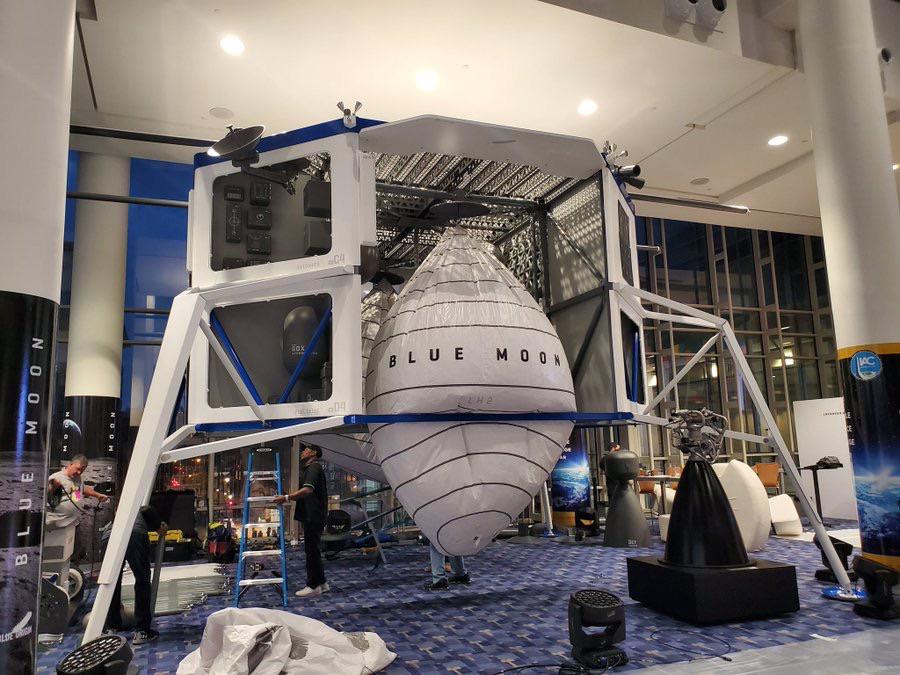
However, particularly if we’re viewing things through a capitalist lens, it’s hard to argue that a market is “stabilizing” if there’s only one real supplier. Blue Origin, despite their recent suborbital tourist flights, is struggling. Due to poor performance, investors worry about Virgin Galactic and the new lawsuit against Richard Branson and Virgin Galactic chairman Chamath Palihapitiya over allegedly dumping shares while covering up spaceship defects is not going to help matters.
Roscomos, the state-owned Russian space company has long struggled financially and recently announced steep budget cuts are not going to help. Private Russian spaceflight company Dauria is fighting bankruptcy . French company Arianespace reported a 30% increase in 2021 revenue but their lack of reusable rockets and their promised reusable “Prometheus” engine (to be first launched eight years from when I’m writing) being delayed means they’re falling further and further behind SpaceX. Worse, the impending arrival of Starship means Arianespace is in serious trouble .
So with them not going anywhere, what happens if SpaceX collapses? Elon Musk has already warned his employees about potential bankruptcy if it can’t speed up production (though he later admitted this was unlikely). But I’ve talked to plenty of people about the space industry and most of them are unaware of the numerous successful competitors out there.
Virgin One was spun off from Virgin Galactic and shortly after its first successful launch of seven satellites announced that NASA put them on their short list of satellite launch providers . This doesn’t guarantee they’ll be selected for launches, but the private sector is watching them. They can’t launch very large satellites, but their launches are only $12 to $15 million per launch . They’re a force to watch.
Rocket Lab and Firefly are also looking very competitive :
Rocket Lab’s small Electron rocket goes for about $7 million per launch, Firefly’s medium-sized Alpha rocket goes for $15 million per launch, and SpaceX’s Falcon 9 is advertised at $62 million per launch.
There’s also UP Aerospace , United Launch Alliance , SpaceForest (services starting in 2023), and many others starting development. Raphael Roettgen , on the TerraWatch podcost , estimated that there are around 200 launch startups around the world today.
The market is booming and stabilizing. Customers can now choose between a wide varieties of rockets with different payload sizes and price points, but there’s still an enormous amount of risk and it will be a couple of decades before we can approach the commodity stage.
Starship Changes Everything
A few years ago, a friend in Nottingham told me she wanted to spend the weekend in Ireland, so she bought a plane ticket. When she changed her mind, she threw away the ticket. It was only £20. No longer the domain of the wealthy, air travel is for everyone and this is (eventually) coming to space.
Costs
For the space shuttle, the average cost per launch for the last decade was around one billion dollars . For Starship, Musk expects launch prices of less than ten million within two to three years . Eventually, he projects those prices could be less than a million dollars a launch.
In contrast, the Concorde’s inaugural 1973 flight from Paris to Rio de Janeiro , roughly 5,700 miles (9173 km), operating at a cost per flight of up to $5.20 per mile , could be looking at just shy of $30,000 for that flight. Adjusted for inflation, that’s almost $190,000 today. However, the $5.20 figure was for a 1972 estimate. In reality, the Concorde was subject to wild cost overruns, so a $190,000 flight cost is certainly low.
That Starship may not be significantly more expensive than a Concorde is mind-boggling. The fact that Starship might actually cheaper than planes for long-haul flights is even more mind-boggling .
But wait, there’s more! The cost of building the Boeing 737 , one of their least expensive aircraft, is just over $100 million. At the high end, Starships could cost around $37 million each , but an optimistic mass production rate could drop that price to $5 million per Starship. This is insane.
Disruption
The lower costs, however, have a knock-on effect for the entire industry. The media tends to think of the cost of the launch, but the insanely high launch costs ripple through the industry. Want to make a lunar lander out of stainless steel? Too bad. Titanium is about 35 times as expensive as stainless steel , but it’s weighs half as much. With costs per kilogram in the thousands , every penny counts.
| Launch Vehicle | Payload cost per kg |
|---|---|
| Vanguard | $1,000,000 |
| Space Shuttle | $54,500 |
| Electron | $19,039 |
| Ariane 5G | $9,167 |
| Long March 3B | $4,412 |
| Proton | $4,320 |
| Falcon 9 | $2,720 |
| Falcon Heavy | $1,400 |
| Starship | $100 |
Yes, Starship costs can potentially cost an order of magnitude less per kilogram. What else does that mean?
It means missions can be run in parallel, not in series.
Think about a string of electric lights. If they’re run in series and one goes out, they’re all out. If they’re run in parallel and one goes out, the rest keep working and you can compensate for the missing bulb.
Missions in space today are long series of single points of failure once launched. Consider a simple (ha!) robotic rover to Mars. It’s been devilishly hard to land on Mars, so we have to:
- Design the rover
- Order the parts for the rover
- Ensure all tolerances are perfect for the rover
- Assemble the rover
- Test, test, test, and retest the rover
- Return to step 2 if the parts aren’t up to snuff
- Return to step 1 if the design isn’t up to snuff
- Do all of this in a near-sterile environment so we don’t contaminate Mars
- Move the rover to the rocket
- Have a perfect launch
- Wait six to nine months while the rocket heads to Mars
- Enter the Martian atmosphere at just the perfect angle
- Survive the descent to the surface
- Scream in agony as the dust storm covers the solar panels and kills the mission
I skipped a few steps in there, but prior to launch, costs are astronomically high to due having to be perfect, absolutely perfect, because once you launch, any failure at any single point renders all of the previous work moot.
With Starship, you could build multiple rovers, with much less costly materials (weight no longer being the major consideration), lower tolerances for many of the components, and fly all of them to Mars on multiple launch for less than the cost of a single rover today. A couple of flights fail? Fine, you still have a fleet of rovers on Mars. And no, you can’t reduce all of the tolerances, but by building a fleet, the individual costs can be lowered as you gain more experience in procurement and assembly.
Heck, the Perseverance rover to Mars will have a projected final mission cost of almost three billion dollars . Musk’s long-term goal is to make a passenger ticket to Mars as low as $100,000 .
Starship changes everything.
What the Future Holds
Just as the internet has proven to be a hugely disruptive force for industry and society, so will the new space industry. But like the internet, we don’t know what that impact will be.
New Industries
As we improve our rocket technologies, many of the new industries are already on the horizon. Space tourism on rockets and even the ISS have already happened. But space hotels are being actively planned :

Real-time satellite imaging is widely available, high-speed, low-latency internet is starting, and Japanese company Astroscale is already planning to remove space debris and provide on site inspection and maintenance of satellites. (Dealing with the ever-increasing threat of space junk is a serious problem ).
Mining in Space
Of course, no story would be complete without discussing mining. If you are at all interested in space, you’ve long heard that the world’s first trillionaires will be space miners. The early space mining companies are gone because they, like OTRAG, were early adopters who adopted too early. They generally anticipated that the first space mining would involve mining extremely valuable ... water.
Yes, water. They were going to sell it to spacecraft using various means of water propulsion (seriously, the idea is picking up steam). However, the industry they wanted to support wasn’t ready to be born, so the space mining companies drowned (forgive me). But water is going to be a seriously valuable resource in space. I describe this briefly in one of my public presentations (if the video doesn’t start at the correct spot, jump to 50:13):
Side note: I’m also a public speaker, so if you want to have me give a talk about this, let me know!
But what else might we mine? We are facing a near-term global lithium shortage, so that would be awesome. But where do we find it? Lithium dissolves easily in water and is found in salt flat brines like those of Chile, or pegamites, a type of rock that forms in water-rich magmas. It’s estimated that the moon may have the same relative amount of lithium as Earth, but without water, it wouldn’t be concentrated enough to efficiently mine. Mars? Maybe, but we’re not sure. Ceres has been speculated as a source of minable lithium, but we can’t send our mining robots on a hunch. We need to go prospecting to find what we need and currently, that’s too expensive—until Starship is fully operational.
The same goes for Rhodium and the other platinum-group metals. Without a low-cost ability to to prospect space, we can’t send out mining equipment, much less miners.
But let’s say we find a near-Earth asteroid with the metals we want. The cost, per load, of those materials needs to be lower than the cost of building our prospectors, launching, searching, building our mining robots, launching them, mining the metals, refining the metals on site, and then returning them to Earth. As it stands now, we can’t meet those costs and even with Starship, getting them back to Earth is difficult. We can’t use parachutes. Simply crashing them on our planet will destroy much of it in the atmosphere and needlessly endanger lives, so they need to be brought back in a rocket. It’s simply not economically feasible.
More accurately, asteroid mining isn’t economically feasible until we have an established industry in space. At which point, all of that changes because we can build, launch, and return in space. That’s much less expensive and we can use those materials to build out space-industry in a more cost-effective manner.
Sadly, that’s decades away. But asteroid mining might still be viable.
The moon is regularly hit with asteroids and probably about 20% of those are metallic. Building stations on the moon and using the materials there might be worthwhile...and we’re already looking at lunar stations. Thus, we can do asteroid mining, so long as we’re doing it on the moon.
The south pole of the moon is a potential site for setting up our stations . It appears to have abundant water and if we send out plenty of robotic prospectors, finding a location near silicon and platinum deposits would give us the ability to mine the materials to make solar panels to power our lunar outposts. But we won’t know until we start prospecting.
Disruptive Uses?
We’ve already discussed Starlink , a mega-constellation of satellites to bring high-speed, low-latency internet connections to the entire planet. There are considerable challenges involved, including efforts to reduce their visibility and not ruin ground-based astronomy. The long-term goal is to have over 30,000 satellites operational, so effort is being put into ensuring defunct satellites de-orbit as quickly as possible to mitigate the problem with space debris .
But it’s possible that Musk may be planning to become a trillionaire by creating space-based solar power generating stations . These generate nice, clean solar power in space and beam it back to Earth. Before you think this is just science fiction, China is already planning on doing this , but unlike SpaceX, they don’t have access to Starship. That being said, the the long-term benefits outweigh the costs of launching via China’s Long March 5 rocket. China is pushing forward.
Musk’s path may be less clear because if successful, he threatens the fossil-fuel industry and they will do everything they can to stop him (unless he creates a partnership with them, which I doubt). They will be lobbying like made, citing environmental concerns of the launches (oh, the irony), trying to find regulatory means of stopping him, and pointing out to politicians all the jobs their districts stand to lose if these stations are operational. This seems strange, but we’ve already seen this with Tesla Motors. This will be OTRAG all over again: political and market forces working hand-in-hand to block innovation.
There will be other disruptive markets to emerge from this industry sometimes being referred to as NewSpace , but like Black Swan events , we can’t predict them in advance, and they will have enormous impacts on markets.
Note: space elevators will not be the disruptive force . Not only are they probably decades away, but an ascent to space will likely take weeks.
Investing
Like OTRAG, early space mining companies died because they were too soon. Early investors in this “novelty” stage of the market lost a lot of money. Now that we’re entering the stability phase, investing presents less risk, though less reward.
Before NewSpace started entering the stability phase, there were few, if any, VCs or financial services company offering services. Today, there are many of them. Today, investment giant Morgan Stanley is even offering space investing . However, space investing today is mainly in the hands of the wealthy. Sadly, this is probably a good thing because as if often pointed out by investors, unless you put in 10,000 hours or more in deep study of NewSpace, you won’t have the expertise to evaluate investments.
NewSpace can’t do the early internet thing of “throw money at the wall and hope it sticks.” The amounts of money involved means you have to have an extremely high chance of a payoff. These companies aren’t investing in new technologies so much as they’re investing in markets with solid business plans. This sets this industry apart from the early days of the tulipmania Internet Bubble.
Of course, other companies are now getting involved. The highly-regarded International Space University (ISU), has a Master’s Programs in Space Studies and offers a wide variety of professional courses in different aspects of the space industry.
Be Patient
We’re at the NewSpace equivalent of the internet in the mid-90s. It’s booming tremendously, but due to the extremely high costs and high risks, it’s being approached in a healthier manner than the internet boom. However, we won’t see internet speeds of advancement. For much of the internet, it was a matter of building ISPs and connecting people and letting the industry blossom. For NewSpace, the entire industry needs to be boostrapped, including the core infrastructure.
It’s not going to impact us directly today–no one is buying a cheap flight to an orbital hotel–but it’s coming and despite the naysayers, it’s not stopping. And even if SpaceX unexpectedly goes bankrupt (it won’t), it will still keep coming. I don’t know if I’ll live long enough for a vacation in space, but my daughter will. So will your children. So will many of you who read this.
The long-awaited promise of a future in space is finally arriving.
